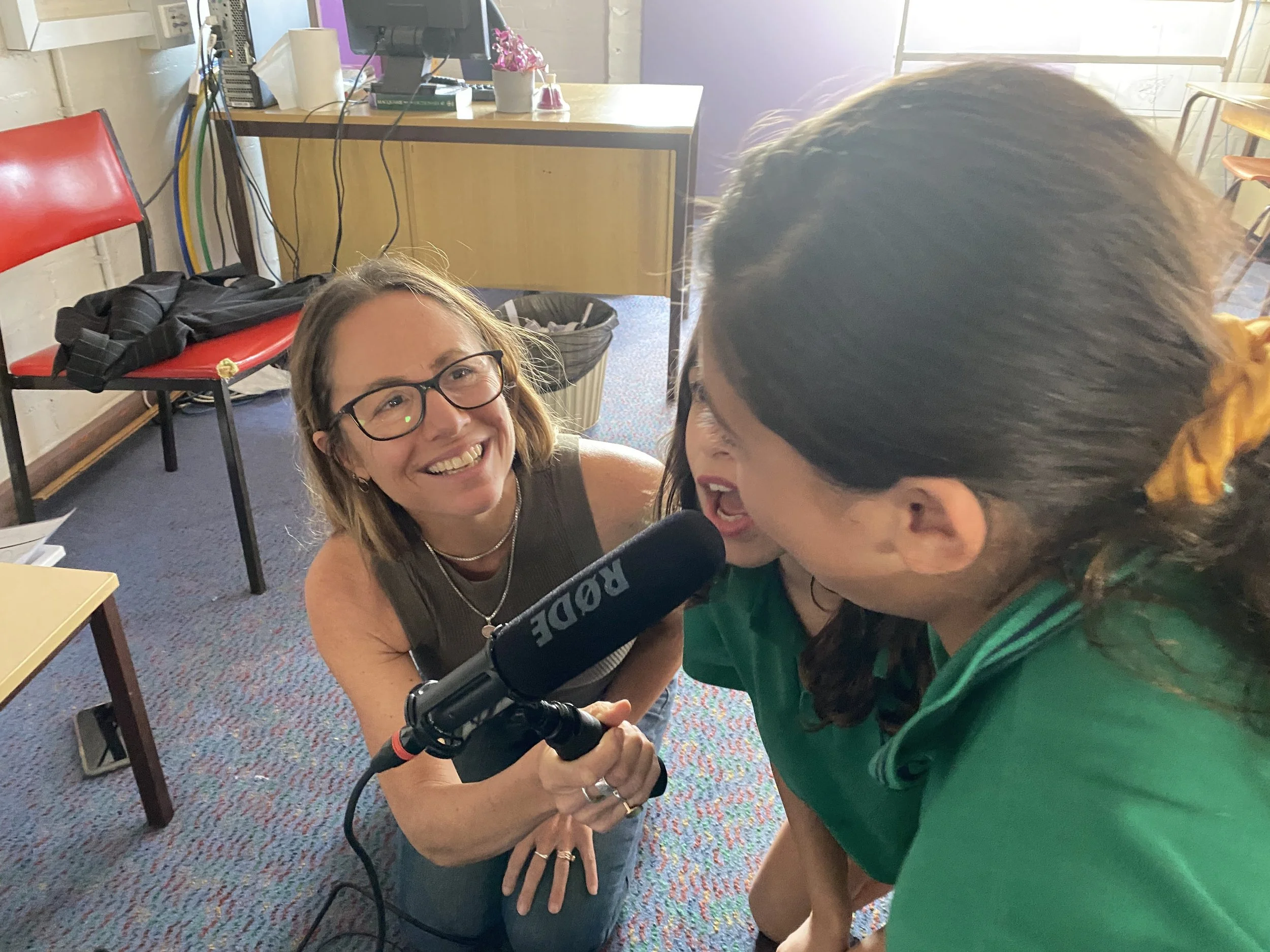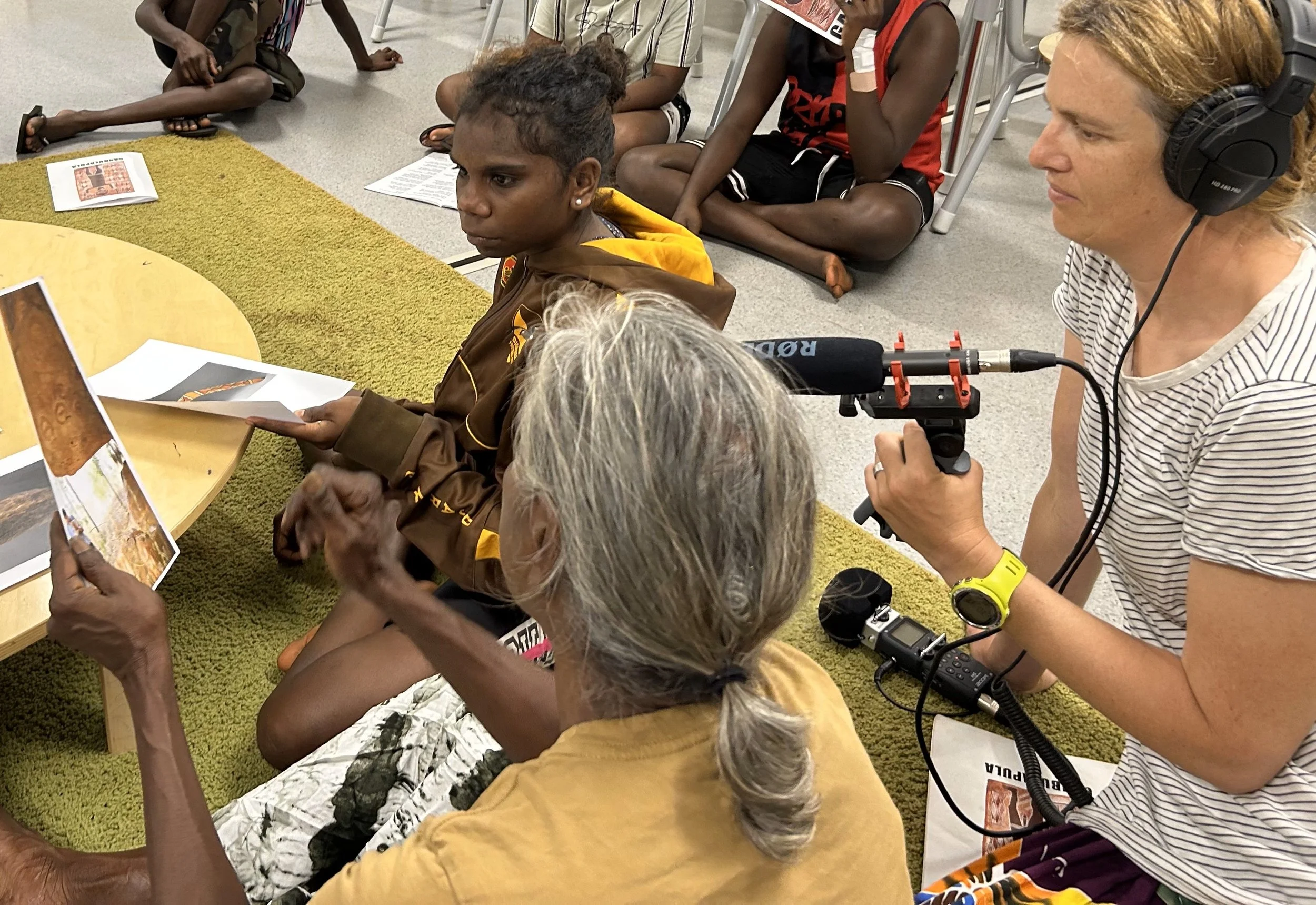About the podcast
Hey History! is a podcast series designed to be used in Australia classrooms, and it’s for anyone interested in Australian history.
Our five episodes are:
The Oldest Classroom: How did First Nations people learn before books, schools and the internet? How do First Nations people learn today?
First Meetings at Kamay Botany Bay: What happened at the first meeting between Aboriginal people and Captain Cook? Dharawal person Ray Ingrey, historian Paul Irish and the diary entries of Captain Cook tell the story of the Endeavour’s eight days at Kamay Botany Bay.
Convict kids: How did ordinary children become prisoners and get sent halfway round the world? What was life like as a convict kids in Lutriwita Tasmania? With guests Professor Hamish Maxwell-Stewart and Cascades Female Factory tour guide Marcelle Mangan.
Gold Fever: What was life on the goldfields of Ballarat, on Wada Wurrung Country, like? How did everyone get along? What was the Eureka Stockade? How did the Gold Rushes change Australia? With guests Professor Fred Cahir, Andrew Pearce of Sovereign Hill, and Sarah Van der Wouw of Eureka Centre Ballarat.
Bonus How to talk with kids about Australian history: Professor Anna Clark and Professor Clare Wright are the executive producers of this podcast. They cover topics like how kids can work with different perspectives on historical events, why a big part of talking about history is actually asking questions and how can you encourage kids who are interested in history, but might not get the facts straight.
Using this podcast in the classroom
Go to the For Teachers section of our website for:
Learning Materials
Scope and Sequence sheets
national and state curriculum guides.
Podcast length
Each podcast episode is between 20 - 30 minutes.
This length may suit some listeners and classrooms, and may not suit others.
So, there’s a halfway point in each episode, that’s clearly mentioned and there’s a recap summary of the first half.
How to cite this podcast:
Clark, A., Curtis, J., Wright, C., & Jorgensen, B. (2024). Hey History! (Season 1). UTS Impact Studios. https://doi.org/10.5281/zenodo.11557916
Partners
The team
-
Host
-
Executive producer; Podcast concept, design and development
Anna Clark is Professor of History at the University of Technology Sydney.
-
Executive producer
Clare Wright is Professor of History and Engagement at La Trobe University.
-
Audio producer
Jane Curtis is a Senior Audio Producer at Impact Studios. -
Audio producer
Britta is a Senior Audio producer at Impact Studios.
-
Indigenous Cultural Consultant
Associate Professor Katrina Thorpe is a Worimi woman and Academic Lead at Nura Gili, University of New South Wales.
-
Story Editor
Kyla is executive producer of award-winning kids podcast Short & Curly.
-
Learning Materials Designer
Nick is a primary educator at Preshil Primary School in Melbourne, and a member of the Victorian History Teachers Association.
-
Curriculum Guide Designer
-
Curriculum Adviser
Nicole is a HSIE Subject Matter Expert and Curriculum support advisor HSIE K-6 at the Department of Education NSW.
-
Curriculum Adviser
Rose was previously a Curriculum Senior Inspector at NESA and a history teacher of 15 years.
-
Impact Studios Executive Producer
Sarah leads UTS Impact Studios, a media production house that tells stories for impact.
Impact Studios work with academics, businesses, the community, educational organisations, non-profits, and cultural institutions that want to share knowledge through podcasts.
Participating schools
Thanks to all the students whose voices you hear in this episode and their schools and teachers: Princes Street Primary School, Marrickville West Primary School, Westbourne Grammar School, Preshil Primary School, La Perouse Primary School, and Yirrkala Bilingual School.
Hey History! is supported by the National Museum of Australia
A note on First Nations place and Country names
Where possible, we have used First Nations place and Country names. There are frequently alternative spellings—such as Gadigal/Cadigal, Gomeroi/Kamileroi — and spellings and boundaries of First Nations names and places change over time.
Furthermore, detailed information about First Nations and clan boundaries is sometimes missing or contested, especially where the effects of colonisation have been felt most thoroughly (such as across south-eastern Australia).





